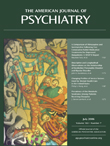Once upon a time, during the winter of 1956, in a town on Boston’s North Shore—Swampscott by name, population: 13,000—there lived a family of six: a mother and father and their four children—sons aged 12 (this writer), 10, and 3 and a 1-year-old daughter. It was Christmas vacation, and with school out, the two older boys dressed for the cold weather, threw their ice skates over their shoulders, got on their bicycles, and headed off to the park next to a neighborhood elementary school.
The town’s Park Department and Fire Department had teamed up to flood the park to a depth of 3-4 inches. With the weather predicted to be clear and below freezing day and night for several days, an ice rink had come to life as water from a hydrant was directed onto the park’s frozen turf.
At the park’s edge, the brothers dropped their bikes behind a green wood-slat bench, took off their black high-top canvas sneakers, put on a second pair of socks and their hockey skates, and inched out onto the ice. Their skates hurt; their toes became numb; their ears ached. Yet with the blue sky overhead, and the sound of skate blades tracking over smooth ice, ‘twas a bit of heaven-on-earth. No embedded branches to hop or stumble over as there would have been with pond skating; no fear of creaking, cracking ice that might give way (always a worry when skating at the swamp). Just a secure, pristine surface for skating on that sunny December day. The sun lowered in the late afternoon sky, and the train from Boston chugged out of Swampscott station at half past four. The steam locomotive gathered speed on an elevated embankment behind the elementary school, gave a double whistle-blast, and galloped northeast with its passenger cars in tow toward Marblehead and Salem, and then on to stops further up the coast with Currier and Ives-like names: Montserrat, Prides Crossing, Beverly Farms, Manchester-by-the-Sea.
Automobiles had turned on their headlights, and in the dusk the brothers glided over to the green bench where they had left their sneakers, and took off their skates.
WHAT?! In clear view, my black bike with no fenders was being stolen! I had my skates off and just one sneaker on. But this 12-year-old lad with one shoe off and one shoe on charged into the street after his bike and its rider. I made excellent time in my syncopated dash. Within 20 strides I had caught up to my bike, grabbing it by the seat post. The rider kicked at me, declaring, “It’s my bike!” Holding on to the seat post with one hand and grabbing the handlebars with my other, I pulled the bike and its rider toward me. Down we went: the rider, the bike, and I, in a tangle of arms and legs and spinning wheels.
The thief took off, running up the street. He then turned. While backpedaling, he gave me a two-finger salute with raised index and pinky fingers, the style in my town in 1956 for expressing contempt. Punching the air with both hands saluting, he yelled, “Kike!” And further up the street, cupping his hands around his mouth to make himself better heard, again he shouted, “Kike!”
With no damage done to the bike—the chain looked good and the wheels weren’t rubbing on the frame—and no visible damage done to me, I put on my second sneaker, threw my skates over my shoulder, and waited for my brother to finish changing.
Mounting our trusty bikes, chilled to the bone, my brother and I headed home in the pitch-dark winter night. We rode on the sidewalks past house after house with decorated Christmas trees in their living room windows. Colored lights hung from the houses’ eaves. But I couldn’t enjoy the sights of the Season. I was angry. Not about my bike’s being stolen. I had remedied that. And not about being called a kike. That was just the way things were sometimes in my small town north of Boston. I was angry about the lie, the thief’s declaration: “It’s my bike.” That was the insult. How could the thief say the bike was his?
“Gaslighting” is a term used to describe the effort of one person to undermine another person’s confidence and stability by causing the victim to doubt his or her own senses and beliefs. The term derives from the 1944 movie “Gaslight” in which Charles Boyer tries to drive Ingrid Bergman mad by causing her to mistrust her own perceptions. She wonders: are the gaslights flickering in her home? With Boyer’s undermining promptings, Bergman becomes less and less sure of the lights, and less and less sure of herself.
But back to the bicycle incident. If I could revisit once upon a time, and revise it, how would I do so? I might have yelled at the hooligan backpedaling up the street, “Remember what you are, you name-calling, bike-stealing, liar and thief!” But he probably would have countered, “Can’t hear you. Did you say something?” and thus neutralize my effort to set the record straight. Or perhaps while we were on the pavement in a heap, I should have given him a punch in the stomach he’d never forget. But probably that would have guaranteed a greeting party for me with his older brothers and their friends at some later date on my way home from school.
So, upon revisiting once upon a time, no revisions seem fitting. Rather, that day shall remain for me an object lesson: beware gaslighters, read their operating manuals, and parry their efforts to bully the innocent.

